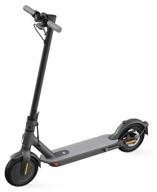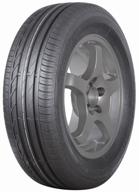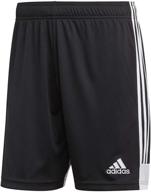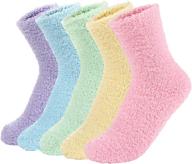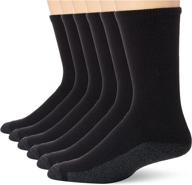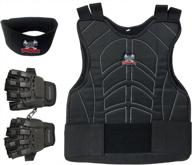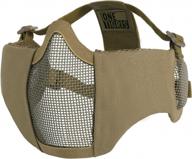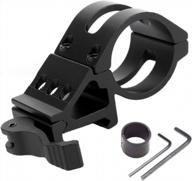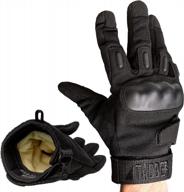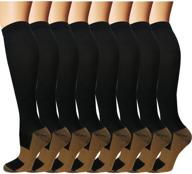Similar products
Essential Gear for Australian Rules Football
When getting into Australian Rules Football (Aussie Rules or AFL), having the right gear is crucial for performance and safety during training and matches. Here is an overview of the key equipment every footy player needs.
Top products in 🏉 Australian Rules Football
Footy Boots
A good pair of footy boots is a must-have. Boots are designed for traction and stability on grass or turf surfaces. Key features include:
- Molded cleats for grip.
- Reinforced toes for kicking.
- Padded ankle collar.
- Lightweight synthetic or leather upper.
Consider replaceable cleats for various field conditions. Proper fit and break-in time is important to prevent blisters. High tops provide more ankle support.
Another interesting products
Mouthguard
Wearing a mouthguard during training and games minimizes the risk of dental injuries. They come in various styles:
- Boil and bite - Softened in hot water then molded to teeth.
- Custom-fitted - Made from dental impressions for optimal protection and comfort.
- Stock - Less expensive but less comfortable pre-formed options.
Choose a thickness and style that's comfortable. Maintain your mouthguard by rinsing after use and storing in a protective case.
Uniform and Pads
The AFL uniform consists of a jersey, shorts, socks, and protective gear:
| Equipment | Description |
|---|---|
| Jersey | Sleeveless guernsey with team colors/logos. |
| Shorts | Lightweight shorts with pockets for storing a spare mouthguard. |
| Socks | Long socks help prevent abrasions on lower legs. |
| Pads | Optional padded shorts, thigh guards, rib guards to absorb impacts. |
Jerseys are cotton or synthetic blends for breathability. Proper fit allows full range of motion. Keep spare jerseys on hand in case of tears or blood stains.
Other Accessories
Other useful gear and accessories for training and game day include:
- Duffle bag to carry gear.
- Water bottle and sports drinks.
- Athletic tape for injuries.
- Foam roller for muscle massage.
- Headgear or helmets (optional).
- Mouthguard case.
Taking care of your footy gear and replacing items as needed ensures you can perform at your best while lowering injury risk.
Choosing the Best Footy Balls
The right Australian Rules footy can improve handling skills and gameplay. Footy balls are designed for different weather conditions and fields. Here's what to look for when selecting footys for training, matches or recreational play.
Match Balls
Official AFL match balls like the Sherrin "Pro" meet professional specifications:
- Leather cover withstands kicks.
- Textured synthetic laces improve grip.
- Balanced inflation for distance and control.
- Hand-stitched construction.
The Sherrin "Match" ball has similar features at a lower price point. These balls maintain shape and perform well in wet or dry weather. The leather does require proper break-in for optimal grip and feel.
Training Balls
For practice drills and scrimmages, training balls like the Burley "Trainer" provide durability:
- Outer canvas layer prevents tearing.
- Rubber bladder retains air longer.
- Textured synthetic laces.
- Affordable for frequent use.
These balls are easier to control when learning skills like handballing or marking. The canvas withstands boot contact during repetitive drills. Training balls tend to get soggy when wet.
Indoor/Arena Balls
On hard indoor surfaces, balls like the Mikasa "Indoor" optimize grip and control:
- Durable synthetic leather cover.
- Low bounce responsive rubber bladder.
- Reduced inflation for quick movements in close quarters.
- Less abrasive on gym floors.
These balls are not regulation size but have great touch for small-sided games. Outdoor use is not recommended due to minimal water resistance.
Night Match Balls
For evening games, glowing footys like the Molten "Night Match" enhance visibility:
- Bright exterior coloring.
- LED illuminated internal bladder.
- Meets size/weight requirements.
- Rechargeable battery within ball.
The LED lights stay lit for 4+ hours of gameplay. Charging case repowers the internal battery as needed. These specialty balls provide visibility while maintaining a true flight path.
Wet Weather Footys
For rain or heavy dew, the Burley "Extreme Weather" ball performs well:
- Durable waterproof cover.
- Polyurethane foam filling keeps shape.
- Deep laces prevent slipping.
- High visibility colors.
The foam insert prevents waterlogging while maintaining a responsive feel. Grip is retained during wet conditions. Not ideal for dry fields due to minimal bounce.
Choosing the right Aussie Rules footy improves ball handling. Match balls are ideal for games while training balls maximize durability. Consider surface and weather conditions like indoor fields or rain when selecting a footy.
Goal Post Options for Australian Rules Football
The type of goal posts used in Australian Rules Football can vary based on the setting. Here is an overview of common portable, permanent, arena and backyard goal options along with their pros and cons.
Portable Goals
Portable goals like the Sherrin "Matchday" are lightweight and adjustable:
- Aluminum oval post design.
- Telescoping height from 2m to 4m.
- Screw-in base for stability.
- Net clips onto posts.
- Easy setup and takedown.
Pros: Great for practice fields or temporary venues. Adjustable heights accommodate different ages/competition levels. Cons: Can topple in high winds if not weighted properly. Durability may suffer from frequent assembling.
Permanent Goals
In-ground goal posts like the Ausgoal "Premiership" are fixed installations:
- Steel posts cemented into ground.
- Regulation height and padding.
- Oval backings for net attachment.
- Painted club colors.
Pros: Sturdy, immobile goals that handle contact. Official height and padding for safety. Cons: Require professional installation and permanent field commitment.
Arena Goals
For indoor arenas, folding goals like the Powerplay "Folding" maximize space:
- Steel frame collapses against wall.
- Wheeled base for positioning.
- Adjustable heights.
- Padding for safety.
Pros: Frees up floor space when stored. Easy to maneuver for events. Cons: Lower durability with moving parts. Limited padding given space constraints.
Backyard Goals
For home use, economical goals like the Auskick "PVC" get the job done:
- PVC plastic construction.
- Teardrop or square posts.
- Weights or stakes to secure.
- Budget friendly price.
Pros: Inexpensive option for recreational games. Portable for driveway or backyard use. Cons: Not regulation size or padding. Minimal durability guarantees.
Choosing appropriate goals for your venue and level of play ensures Aussie Rules matches are played safely with proper dimensions. Assess portability needs, available space and budget when selecting goal posts.
Diet and Nutrition Tips for Australian Rules Football
Proper nutrition provides Australian Rules footballers with the energy, strength and endurance to perform at their best. Here are some dietary strategies for optimal training and match day performance.
Carbohydrates
Carbs are the primary fuel source for footy matches and high-intensity training:
- Eat carbs at each meal and snack.
- Choose complex carbs like oats, brown rice, quinoa.
- Time carb-heavy meals for post-workout/match replenishment.
Consume a mix of low and high glycemic index carbs to promote sustained energy levels.
Protein
Protein supports muscle growth and recovery from training:
- Aim for 0.5-0.7g per pound of bodyweight daily.
- Lean meats, eggs, dairy, beans and legumes are good sources.
- Whey protein supplements can help meet needs.
Spread protein intake throughout the day for optimal synthesis. Casein protein before bed aids overnight recovery.
Healthy Fats
Healthy fats provide fuel, protect joints and reduce inflammation:
- INCLUDE olive oil, nuts, seeds, oily fish.
- LIMIT processed and saturated fats.
- OMEGA-3s reduce exercise induced muscle damage.
Emphasize anti-inflammatory fats while minimizing unhealthy trans and saturated varieties.
Pre-Match Meals
In the 3-4 hours pre-match, fuel up with:
- High carb, low fiber foods - white rice, bread, potatoes, pasta.
- Moderate protein - chicken, turkey, fish, eggs.
- Low fat dairy - yogurt, milk.
- Avoid fatty/high fiber foods which delay gastric emptying.
This pre-game meal optimizes energy availability and gastric comfort during play.
Post-Match Nutrition
Promptly refuel within 30-60 minutes post-match:
- Carbs - dried fruit, chocolate milk, sports drinks.
- Protein - Greek yogurt, cottage cheese, whey protein.
This fast digesting nutrition promotes muscle repair, glycogen replenishment and hydration.
A balanced footy diet high in carbs, protein and healthy fats provides proper fuel for training, recovery and performance.
Preventing Common Australian Rules Football Injuries
Australian Rules Football involves frequent sprinting, rapid direction changes, jumping, collisions and contact plays. These elements make players prone to certain injuries that can be minimized with preventative measures.
Hamstring Strains
Hamstring strains are a common non-contact injury in footy. Prevention strategies include:
- Gradually increase training load to adapt hamstrings.
- Incorporate eccentric strength exercises using Nordic hamstring curls.
- Improve flexibility through consistent hamstring stretching.
- Wear compression shorts to keep muscles warm.
Early detection and proper rehab ensures full recovery before returning to play.
Ankle Sprains
Changing directions stresses ankles and can lead to rolls and sprains. Reduce risk by:
- Taping or bracing ankles during play.
- Wearing supportive footy boots.
- Improving balance/proprioception with wobble board training.
- Limiting high impact landings in training.
If sprained, immediately immobilize and elevate the ankle to minimize swelling.
Shoulder Dislocations
Hard falls and collisions can dislocate shoulders. Safeguard shoulders with:
- External rotation exercises using resistance bands.
- Avoiding tennis ball rehab drills which increase instability.
- Taping or bracing at-risk shoulders.
- Landing on your side rather than an outstretched arm.
Use caution when returning to play after prior shoulder dislocations.
Shin Splints
Shin splints result from repetitive running. Help ward them off by:
- Replacing footy boots regularly to minimize worn cleats.
- Avoiding hard surfaces for distance running.
- Gradually increasing running distance.
- Stretching and foam rolling calf muscles.
Reduce activity at the first signs of pain to prevent stress fractures.
Concussions
Head knocks frequently cause concussions. Be proactive by:
- Seeking professional help for suspected concussions.
- Allowing full recovery time before returning to contact play.
- Wearing headgear for added protection.
Concussions require strict adherence to graded return-to-play protocols.
Implementing preventive measures enhances player longevity over the course of a footy career.
Improving Core Skills in Australian Rules Football
Mastering the fundamentals of kicking, handballing and marking is critical in Australian Rules Football. Here are some effective drills and tools for honing these skills during team practices or solo sessions.
Kicking
Accuracy in drop punts, drop kicks and checkside kicks comes with repetition. Useful kicking drills include:
- Stationary kicking through a target hoop or at a wall rebounder.
- Kickbacks with a partner calling for the ball then delivering to foot.
- Snap kicks on the run after receiving a handball.
- Jogging and kicking to a moving partner.
Marking paint, kick trackers or goal post replicas improve aim at home. Include both dominant and non-dominant foot.
Handballing
Handling the wet, oval ball takes work - handy handballing drills involve:
- Bounce passing against a wall, alternating hands.
- Quick handball blitz with multiple partners moving in a circle.
- Running and bouncing the ball in one hand before handballing.
- Receiving a pass then pivoting and handballing back.
Use handball nets or wall rebounders for solo practice anywhere. Develop ambidextrous skills.
Marking
High leaps and strong hands create aerial threats. Good marking sessions include:
- One-on-one contests vying for loopy passes from teammates.
- Running jumps off trampolines to grab suspended balls.
- Working on coordination and timing of the jump, grab and land.
Consistent, high-volume drills make skills second nature on match day.
Staying Motivated in Australian Rules Football
Playing Australian Rules Football requires tremendous dedication. Here are some strategies using goal setting, affirmative self-talk and visualization to stay motivated through a long season.
Set Specific Goals
Establish measurable yet challenging goals like:
- Completing a certain sprinting or endurance drill in under a target time.
- Improving vertical leap height by a number of inches.
- Kicking a set percentage of drop punts through the goal posts.
Monitor progress and celebrate successes. Set new goals once existing ones are achieved.
Practice Affirmations
Self-talk impacts confidence and motivation. Example affirmations:
- "I am focused and determined."
- "I am getting better each day."
- "I can accomplish anything I set my mind to."
Repeat statements during training, on the sidelines or whenever you need a mental boost.
Visualize Success
Picture yourself succeeding, like:
- Running tirelessly up and down the field.
- Holding strong contested marks.
- Converting difficult kicks on goal.
Visualization activates neural pathways as if you were physically performing the actions.
Focus on Growth
Measure progress in your skills, fitness and knowledge rather than wins and losses which you can't fully control.
Support Your Teammates
Encourage others and celebrate their improvements which will lift the team overall.
Setting goals, positive self-talk, envisioning success and focusing on growth and teamwork are proven motivational techniques for Aussie Rules football.
How Amazon Prime Benefits Australian Rules Football Fans
For Australian Rules football players and fans looking to purchase footy gear, an Amazon Prime membership provides several useful benefits.
Free Express Shipping
Amazon Prime offers free two-day shipping on hundreds of thousands of items. This allows you to quickly get footy gear delivered right to your door.
Need new goal post padding before next week's match? Want some skills training equipment for the upcoming school holidays? With Prime, you can order it today and receive it quickly with free express shipping.
Access to Exclusive Deals
Prime members get 30-minute early access to Amazon's Lightning Deals and other sales events. This gives you a head start on limited-time bargains for footy gear from top brands.
You can take advantage of flash sales on playing equipment, team uniforms, training aids and more before items sell out or expire.
Streaming of Footy Content
The Prime Video benefit provides unlimited access to a selection of Aussie footy content to watch online. This includes documentaries, matches, shows and movies about Australian Rules football.
You can stream footy programming on your phone, tablet, computer or TV with your Prime membership.
Overall, a Prime subscription can benefit footy fans and players through quick free shipping, exclusive deals, and video streaming. These perks provide convenience and savings when purchasing footy related items.
The History Of Australian Rules Football
Australian Rules Football is a football sport that is distinctive to Australia and predates other modern football games as the first to create an official code of play. The game began its evolution in Melbourne, Australia, in the late 1850s, and the origins of Australian football before 1858 are still the subject of much debate. The game was mainly based on football played in English public schools, but it was shaped by the vast open spaces and the men who played it. The oldest surviving set of rules of Australian Rules Football were drawn up on 17 May 1859, three days after the re-formation of the Melbourne Football Club for the 1859 season. These rules were based on school football rules but made simpler. The game continued to spread throughout the colonies, and by Federation in 1901, Australian Rules Football was the main winter sport in Victoria, South Australia, Western Australia, and Tasmania, with the Victorian Football League (VFL), South Australian National Football League, and the West Australian Football League operating as separate competitions. The game was played in New South Wales and Queensland but was second in popularity to rugby union as the main winter sport.
Football Leagues Victoria
Victoria is home to many Australian Rules Football leagues and competitions. Here are some of the most notable ones:
- Victorian Football League (VFL)
- Victorian Amateur Football Association (VAFA)
- Western Region Football League (WRFL)
- Ballarat Football League
- Bendigo Football League
- Geelong Football League
Other notable leagues and associations include the Bellarine Football League, Central Murray Football League, Gippsland Football League, Hampden Football League, and Riddell District Football League. The AFL is also based in Melbourne, Victoria, and has ten teams from the state. With over 235,970 registered players in 2023, Victoria has more than double the number of players of any other state in Australia, accounting for approximately 42% of all Australian players.









